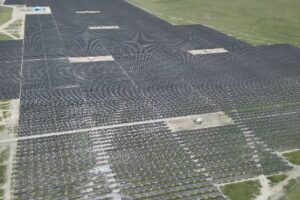Empowering Modern Mobility and Sustainability

Today, we are living in an era where mobility, sustainability, and energy independence are paramount, portable power stations have emerged as indispensable tools for various applications. From outdoor adventures to emergency preparedness, these compact energy sources provide reliable electricity without the noise, fumes, or fuel dependency of traditional generators. This article delves into the evolution, technology, applications, and market trends of portable power stations, highlighting their role in shaping a more resilient and eco-friendly future.
Understanding Portable Power Stations
A portable power station is a compact, rechargeable battery-powered device designed to supply electricity for various needs. Unlike conventional generators, these devices operate silently and emit no pollutants, making them ideal for indoor use and environmentally sensitive areas.
Key Components:
- Battery Pack: Typically lithium-ion or lithium iron phosphate (LiFePO₄) batteries, known for high energy density and longevity.
- Inverter: Converts stored DC power into AC power to run standard appliances.
- Charge Controller: Manages the input from charging sources to prevent overcharging.
- Input/Output Ports: Includes AC outlets, USB ports, and DC carports for versatile connectivity.
Technological Advancements
Recent innovations have significantly enhanced the performance and versatility of portable power stations:
- Battery Technology: The adoption of LiFePO₄ batteries has improved safety, thermal stability, and lifecycle, with some models offering up to 4,000 charge cycles.
- Fast Charging: Advanced models can achieve full charge in under two hours via AC input, with solar charging capabilities also improving.
- Smart Features: Integration with mobile apps allows users to monitor power usage, control outputs, and receive maintenance alerts remotely.
- Modular Design: Expandable battery packs enable users to increase capacity as needed, catering to both short-term and extended power requirements.
Applications Across Sectors
1. Outdoor Recreation:
Campers, hikers, and RV enthusiasts rely on portable power stations to run lights, cookers, and electronic devices, enhancing comfort without compromising the outdoor experience.
2. Emergency Preparedness:
In regions prone to natural disasters, these stations provide critical backup power for medical devices, communication tools, and refrigeration during outages.
3. Remote Work and Construction:
For professionals operating in off-grid locations, portable power stations supply the necessary energy to power tools, laptops, and other essential equipment.
4. Residential Use:
Homeowners use them as a quiet, emission-free alternative to traditional generators, ensuring uninterrupted power during grid failures.
5. Electric Vehicle Support:
Some models offer EV charging capabilities, providing an emergency power source for electric vehicles in areas lacking charging infrastructure.
The global portable power station market is experiencing robust growth, driven by increasing demand for clean and reliable energy solutions:
- Market Size: Valued at approximately USD 0.61 billion in 2023, the market is projected to reach USD 1.74 billion by 2030, growing at a CAGR of 16.7%.
- Regional Insights: North America leads in adoption due to frequent power outages and a strong culture of outdoor activities, while Asia-Pacific is rapidly expanding, fueled by industrialization and rising energy needs.
- Consumer Preferences: There is a notable shift towards lithium-ion technology for its efficiency and lightweight properties, with online sales channels gaining prominence for their convenience and product variety.
Environmental and Economic Impact
Portable power stations contribute to environmental sustainability by reducing reliance on fossil fuels and minimizing carbon emissions. Economically, they offer cost savings over time, eliminating fuel expenses and reducing maintenance costs associated with traditional generators.
Challenges and Considerations
Despite their advantages, portable power stations face certain challenges:
- Initial Cost: High-quality units can be expensive, potentially limiting accessibility for some consumers.
- Power Limitations: While suitable for many applications, they may not support high-demand appliances for extended periods.
- Charging Time: Solar charging can be slower and weather-dependent, necessitating planning for continuous power supply.
Real-World Scenarios
Let’s explore how people are using portable power stations in different environments:
Camping and Overlanding
Use Case: John and Anna go on a 5-day camping trip. With a 1000Wh power station and a 100W solar panel, they charge their drone, run an electric cooler, and power LED lights in the tent.
Result: Silent nights, cold drinks, and great aerial shots — all without worrying about fuel.
Remote Work in Nature
Use Case: Maria, a remote software engineer, works from national parks and campgrounds. Her 512Wh station powers her MacBook Pro, Wi-Fi hotspot, and phone charger for the entire workday.
Result: Total freedom to work where inspiration strikes, no grid required.
Emergency Home Backup
Use Case: The Smith family experiences a winter blackout. Their 2000Wh station powers their router, a small space heater, and emergency lights.
Result: Safety, warmth, and connectivity during the power outage.
Quality and Innovation
Top companies in the portable power station space are innovating fast, introducing:
- Ultra-fast 1-hour full charging
- EV-grade battery cells with longer lifespans
- Solar powered generator kits bundled with foldable panels
- Stackable modular systems for home-scale storage
You’ll find models tailored for everything from minimalist travelers to full-time RVers and even homeowners seeking grid independence.
Sustainability and the Bigger Picture
Portable power stations support a transition to clean energy in a tangible, personal way. Each use of a battery-powered system reduces dependence on gas generators and fossil fuels, cuts emissions, and supports the broader global shift to renewables.
As battery tech continues to evolve, portable stations could become a microcosm of how entire communities power themselves — cleanly, silently, and sustainably.
Future Outlook
The portable power station market is poised for continued innovation and expansion:
- Integration with Renewable Energy: Enhanced compatibility with solar panels and other renewable sources will improve sustainability and off-grid capabilities.
- Technological Enhancements: Advancements in battery technology and energy management systems will increase efficiency and user control.
- Market Diversification: As demand grows, a wider range of products catering to specific needs and budgets will become available, broadening consumer access.
Conclusion
Portable power stations have come a long way from being niche camping accessories. Today, they’re robust, smart, and capable of powering your lifestyle — whether that’s deep in the wilderness, at home during a blackout, or from your van in a remote desert.
They’re no longer a luxury — they’re a utility. An investment not just in convenience, but in energy resilience, sustainability, and peace of mind.
Whether you’re prepping for an emergency or planning your next adventure, a portable power station might just be your most powerful companion yet.





